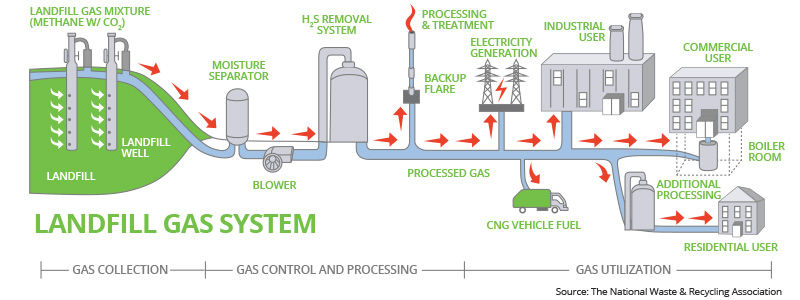Biomass Energy
Growing and Capturing Renewable Energy From Organic Matter
Biomass energy is simply energy derived from organic material. Because the fuel source can be regrown, biomass energy is considered a renewable energy source. DTE Energy is adding more biomass and other clean energy sources to its portfolio mix to build a smarter, greener energy future.
Wood and plant matter can be burned to create steam that runs a generator. Plant sources used for biomass energy include:
- Wood
- Grassy or woody plants
- Cuttings from forestry or farming
- Algae
- Municipal or industrial waste
Landfill Biomass Energy
Landfills can be another source of biomass energy. As organic matter decays, it creates methane, a greenhouse gas that can be refined into pipeline quality natural gas.
DTE Energy supports the local development of renewable natural gas from landfills. That can help reduce reliance on other, less earth-friendly sources of energy. In addition, it prevents methane, a harmful greenhouse gas, from escaping into the atmosphere.
Turning Methane Into Renewable Natural Gas
Through financial support and expert advice, DTE Energy helps landfill managers and government agencies extract the methane naturally building up underground and turn it into usable and renewable natural gas.

- Inside a landfill, there is a lot of organic matter like food waste, paper and other garbage made from natural materials. As this waste decays, it creates methane, a harmful greenhouse gas.
- Pipes are drilled into the landfill to siphon off the methane and other gases.
- The methane is then refined into pipeline quality natural gas.
- The natural gas is then added to the local natural gas transportation infrastructure, usually a pipeline.
- Once the renewable natural gas is introduced, it can be used for any sort application. It can be used to power a turbine that creates electrical energy. It can be sent to your home as fuel for furnace, gas fireplace, stove or anything other gas appliance.
Landfill Biomass Benefits
Fewer Greenhouse Gases
Landfill biomass prevents methane, a harmful greenhouse gas, from reaching the atmosphere.
Renewable Source of Natural Gas
By capturing and refining methane and turning it into natural gas, landfill biomass programs help to reduce the reliance on non-renewable energy sources.
Advancing Technology
Landfill biomass encourages the development of renewable energy sources and the technology needed to supply it.
Learn More About Biomass Energy
The National Renewable Energy Laboratory’s Biomass Energy Basics page has even more information and links about this alternative fuel source.
Students and teachers can find out more by visiting the Energy Kids Renewable Biomass at the U.S. Energy Information Administration.